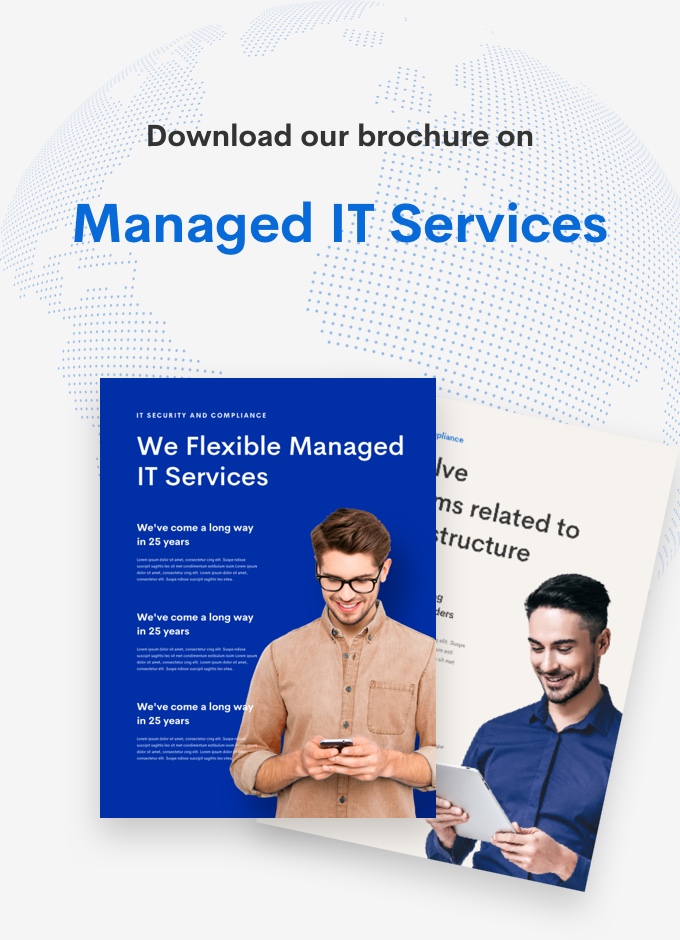Current trends in mobile app development

Current trends in mobile app development
The Corona Pandemic, in 2020 brought some new challenges for all industries and business areas. It is more important than ever to dynamically adapt to current circumstances and opportunities and to follow the latest trends and developments. The same is true of mobile app development. Screen time has increased significantly as a result of the pandemic. For example, these have almost doubled among American children and adolescents in Corona times. In 2020 alone, the average screen time on mobile devices was an estimated 3:49 hours a day. This increasing mobile activity unlocks an ever-growing demand for new and innovative mobile apps. Only those who adapt to the latest trends and technologies in the industry can meet such a demand.
The main trends in this industry are presented below.
The article consists of the following sections:
- Internet of Things (IoT) and mobile app development
- Artificial Intelligence (AI) & Machine Learning (ML)
- instant app
- 5G and mobile app development
- Beacon Technology
- Apps for foldable devices
- Apps for wearable devices
- Conclusion Trends in mobile app development
Internet of Things (IoT) and mobile app development
According to surveys, end-user spending in the IoT area is expected to increase exponentially. From 2017 to 2019 alone, spending in this industry is expected to almost double, increasing from $110 billion to $212 billion. By 2022, the IoT market is expected to be worth more than $500 billion in the US alone. The entertainment electronics sector takes a huge dollar on. This advanced technology is very close to people, affecting their interactions and even how they live at home. One of the largest fields in the IoT area will certainly be smart home automation. By 2030, it is expected that there will be 50 billion IoT devices in circulation. As a result, a huge network of communication devices will be online, from smartphones to kitchen appliances.
More and more people are following the trend of being able to control their own houses with their smartphones. With mobile apps, you can remotely adjust the thermostat in a home, lock or unlock doors, and connect to home security systems. Even refrigerators and other household appliances can be connected to mobile apps. Therefore, there will also be a huge need for new developments and applications here in the future. In addition, IoT also offers the possibility of data exchange within the network. All of this will attract the attention of the app industry and make IoT one of the preferred trends for mobile app developers.
Read about IoT app development costs here.
Artificial Intelligence (AI) & Machine Learning (ML)
Artificial intelligence and machine learning permeated mobile app development years ago. However, we have only just begun to discover the possibilities of these advanced technologies. At the moment when you think of artificial intelligence, you probably first think of virtual assistants like Siri or Alexa. However, the use cases for app development go far beyond that. In 2019 Apple released Core ML 3. This latest version of the iOS machine learning framework is designed to help developers embed AI technology in their apps.
Examples of artificial intelligence and machine learning include image recognition, face recognition, speech recognition, image classification, and mood recognition. Artificial intelligence can make apps smarter and eventually improve performance at all levels. From the backend development process to the frontend user experience, AI will change the way apps are integrated in 2021. A famous successful example of an AI app is FaceApp. This app adds filters to a user’s photo to show how that person would look if they were significantly older, or younger. According to Forbes, FaceApp generates around $4 million a year from its premium subscriptions.
instant app
Instant apps are apps that do not even have to be installed by the user but are available immediately. These native applications are smaller than traditional apps while being extremely user-friendly. Since they do not have to be downloaded in the first place, they are considered very practical. As the name already describes, this type of app can be accessed directly. The apps are not only well received by the end user, but also by the iOS and Android developers since instant apps help to achieve a higher conversion rate compared to normal native apps. For example, Hollar was able to increase the conversion rate by 20% by providing an instant app.
Indeed, since better user experience and faster loading times are very attractive to the end customer, Instant Apps are a real development trend for mobile apps in 2021. The mobile app market will surely welcome the eliminated waiting time for traditional-required installation.
5G and mobile app development
The arrival of 5G technology is sure to have a major impact on mobile app development trends in general. The number of 5G connections worldwide is expected to reach 1.1 billion by 2025 climb. 5G certainly has the potential to change the way apps are used and created in general. 5G enables download speeds that are many times higher than 4G. Mobile apps will therefore be significantly more performant. The functionality of apps will also benefit from the introduction of the 5G network. 5G enables online connection and connection of devices of up to 1 million per square kilometer. This will result in many more devices being able to communicate online in the future. Examples here are devices such as refrigerators, cars, mobile phones, surveillance cameras, etc. All of these devices have the potential to be controlled via mobile apps. Online networking will make it possible.
Beacon Technology
One of the other trends in mobile app development is beacon technology. Beacon technology has been adopted by a variety of industries. From retail to healthcare to hospitality, beacons can add advanced functionality to almost any mobile app. First of all, beacons are just small devices consisting of a battery, CPU, and transmitter. They serve to send information to nearby devices via Bluetooth.
Here’s an example of how beacons work with mobile apps. Let’s say you’re a mobile app reseller building apps for retailers. Your customers can install beacons in their branches that connect to a user’s smartphone via Bluetooth. When a user passes a beacon, they can be immediately notified of a sale or special offer on products at that store. Beacons can also help path shopper behavior in stores. You can tell if a user spends a lot of time in a particular aisle. The app can automatically trigger a push notification to initiate a sale for these products at a later date.
As you can already see, there are special opportunities in the marketing area through the use of beacon technologies. Also, it can ultimately serve to improve the customer experience within a mobile app. According to Statista, the market for beacon technology is growing at a compound annual growth rate of almost 60%. By 2026, this market is expected to increase more than tenfold from 2016 and be worth over $56 billion in 2026.
Apps for foldable devices
Many manufacturers have already developed foldable devices. These include, for example, the Samsung Galaxy Fold, the Huawei Mate X, or the Motorola Razr. Google already announced in 2018 that it will provide foldable support for Android devices through its so-called screen continuity API. Hundreds of mobile applications have already been optimized for this trend. These include Twitter, Spotify, Facebook, Amazon Prime Video, and many more.
As a result of this trend, it will continue to become increasingly important for mobile app developers to make their applications compatible with such devices. With the possibility of a larger screen, users get more space for a more detailed and immersive user experience. With multi-windows it is also possible to run several tasks and programs at the same time. These foldable devices and associated apps are also very interesting in the field of video games and streaming services. This can be used to display extra information or simply improve visibility. Accordingly, it is also important to follow this trend in the field of mobile app development and to prepare the apps for this technology in 2021.
Apps for wearable devices
Not only foldable, but also portable devices, or so-called wearable devices, are becoming more and more popular. This technology is certainly not a new release in 2021. We have already seen many smartwatches or fitness bands in the past. However, this technology has not yet reached its full potential. At the moment there is no sign of any rapid growth in the wearable devices market, but there is definitely annual growth from year to year. In 2017, around 45 million people in the US owned a wearable device, accounting for 18.1% of the population. By 2022, around 67 million devices are expected to be owned. That would still be an increase of more than 7 percentage points. So the trend is in the direction that more and more people are choosing to use portable devices. Accordingly, the demand for new software and apps for such devices is also required.
Conclusion Trends in mobile app development
Overall, the trends are very diverse and offer a wide variety of options for app development. It should be mentioned here that the costs of app development by an agency differ depending on the project complexity, the technology used, and the amount of work required. Appellate shows how app development costs are made up from the app concept to aftercare. Everyone is already aware of many technologies such as IoT, AI/ ML, and wearable devices. Nevertheless, the construction of the 5G network is viewed with high expectations. This network expansion is sure to spark exciting additional technologies and opportunities. We at APP3null deal extremely meticulously and intensively with the latest technologies and are already offering mobile developments related to IoT, AI/ML, blockchain, and much more. on. We would be happy to advise you on your concerns.

